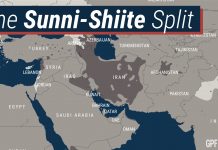Identities based solely on sectarianism now stand in the place of nationalism. On one side are the Sunnis, led nominally by Saudi Arabia. On the other are the Shiites, led nominally by Iran. The Sunni bloc is in disrepair; the Shiite bloc is on the rise. The fact that Iran is Persian has in the past dissuaded Arab Shiites from siding with Tehran, but Saudi efforts to prevent the Shiite revival (not to mention the rise of the Islamic State) have left them feeling vulnerable. They are willing to set aside their differences for sectarian solidarity.
There’s historical precedent for what’s happening in the Middle East. In the 10th century, the Shiite Buyid and Fatimid dynasties came to power because the Sunni Abbasid caliphate, challenged by competing caliphates and upstart Persian and Turkic groups, began to lose its power. Shiite dynasties ultimately could not survive in a majority Sunni environment, especially not after it came back on top from around 1200 to around 1600. The Shiites rebounded in the 16th century in the form of the Safavid Empire in Persia, which officially embraced Shiite Islam as state religion. Power changes hands, cyclically, about every 500 years.
And now, with Sunni Arab unity on the decline and with jihadists challenging Sunni power, the circumstances are ideal once again for Shiite power to expand. The Shiites are a minority, so it’s unclear just how far their influence can actually spread. But what is clear is that modern nationalism is being replaced by medieval sectarianism.





 Special Collection – The Middle East
Special Collection – The Middle East